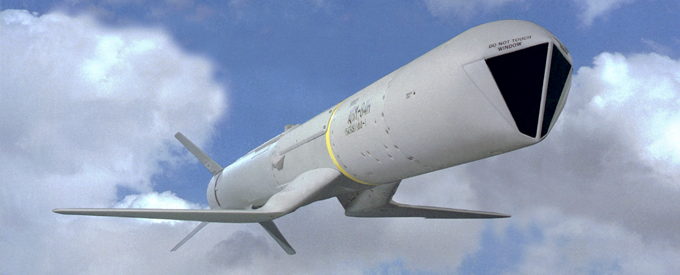2020-06-14
Boeing Bags US$3.1 Billion U.S. Navy Contracts
The U.S. Navy awarded Boeing a combined US$3.1 billion in contracts for Harpoon and Standoff Land Attack Missile Expanded Response (SLAM ER) weapon systems in support of Foreign Military Sales (FMS). About US$2.6 billion of that was contracted recently while the remainder had been previously awarded.
Versatile Harpoon Block II
The Harpoon is an all-weather anti-ship missile system. It has a low-level, sea-skimming cruise trajectory with active radar guidance. The missile is one of the world’s most successful anti-ship missiles and is in service with the armed forces of more than 30 countries. It has been upgraded over the years and is now available as the Harpoon Block II.
Harpoon Block II features an autonomous, over-the-horizon strike capability. These versatile weapons can be launched from aircraft, ships, submarines or by mobile coastal defence vehicles.
Harpoon Block II is a proven weapon system that can accurately locate and hit a variety of targets using its global positioning system aided inertial navigation. It incorporates key guidance technologies from two other Boeing weapons programmes — the low-cost, integrated global positioning system/inertial navigation system (GPS/INS) from the Joint Direct Attack Munition (JDAM) and the software, mission computer, GPS antenna and receiver from the SLAM-ER. Boeing has delivered more than 7,000 Harpoon missiles.
The Harpoon is capable of executing both land-strike and anti-ship missions. To strike targets on land and ships in port, the missile uses GPS-aided inertial navigation to hit a designated target aimpoint. The 500-pound blast fragmentation warhead delivers firepower against a wide variety of land-based targets, including ships at sea (littorals and open ocean), coastal defence sites, surface-to-air missile sites, exposed aircraft, port/industrial facilities and ships in port.
For conventional anti-ship missions, such as open ocean or near-land, the GPS/INS improves midcourse guidance to the target area. The accurate navigation solution allows users to discriminate target ships from islands or other nearby land masses or ships. More than 600 ships, 180 submarines, 12 different types of aircraft and land-based launch vehicles carry Harpoon missiles. It was originally developed for the U.S. Navy but was later adapted for use on B-52H bombers as well. Harpoon missiles also led to the development of the standoff land attack missile (SLAM) and subsequently the SLAM expanded response (SLAM-ER).
Surgical Strike with SLAM ER
A derivative of Harpoon, this is an air-dropped surgical strike weapon against high-value land targets or ships at sea or in port. A highly accurate man-in-the-loop cruise missile, SLAM ER can be launched from a range of more than 150 nautical miles and is reprogrammable in flight. It possess Automatic Target Acquisition (ATA) capability. The ATA system adds a second mission computer to the SLAM-ER missile. Algorithms in the computer examine output from the missile's infrared imager for target locations, enabling the ATA system to locate small targets in cluttered environments and either cue the pilot or guide the missile autonomously to the target.
In addition to ATA modes of operation, SLAM ER is capable of flying automatically to its target using GPS-only inputs. It has several different modes for tracking targets using its seeker including being directed to a desired impact point manually by an operator in an aircraft. This missile configuration also includes logic to process in-flight target updates for hitting moving ships or relocatable targets.
An earlier study conducted by the F/A-18 Operational Flight Program found 70 per cent commonality in software among the SLAM ER, the Joint Standoff Weapon (JSOW) and the JDAM. This commonality among weapon systems reportedly eases the pilot's workload and makes the pilot more efficient. When the pilot gets into the cockpit, he sees controls and displays that are as common as possible among the three weapons – SLAM ER, JSOW and JDAM. There's no need to become an expert in one weapon or another. This commonality allows pilots to get in and shoot either weapon effectively.
The SLAM ER's target-of-opportunity mode allows the launch aircraft pilot to send target coordinates to the missile on the wing of the aircraft prior to launch. After launch, the missile flies toward the target location and provides infrared seeker video back to the control aircraft for standoff and man-in-the-loop terminal control. This quick-reaction target-of-opportunity land attack feature of the SLAM ER can be used to redirect missions against unexpected targets such as missile launchers, or against secondary targets after primary targets are destroyed.
In October 2019, Boeing began construction on a new 35,000 sq. ft. manufacturing facility to support increased production for the Harpoon and SLAM ER programmes. Construction is expected to be complete in 2021.
Reference Text/Photo:


No Comments